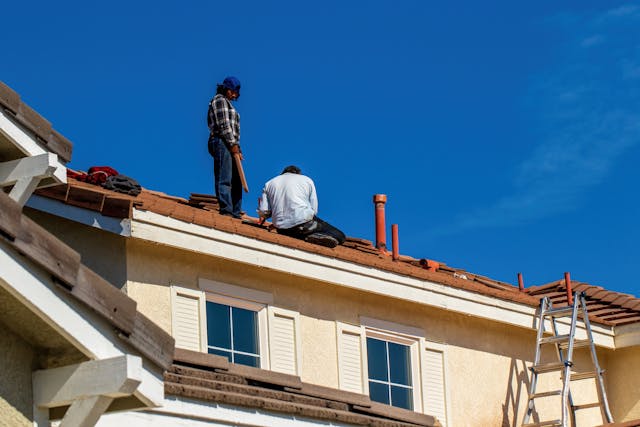It’s important to take the time to inspect your roof twice a year, or at least once at a bare minimum. Even one or two cracked, damaged, loose, or missing shingles can open up a space for the heat to escape your home in the winter and for the rain to find its way in, leading to leaks, mold, and water damage. However, sometimes the damage can be even more extensive than that and in need of serious attention. Here are a few of the signs you should keep an eye out for that should get you calling the pros ASAP.

Widespread Shingle Damage
Seeing individual tiles getting damaged is an indication that you need to replace them. Things like hail and debris, such as tree branches picked up by the wind, can hit them and damage them. However, when you’re seeing curled, cracked, or missing shingles in more than just one area, it’s a sign that the damage goes beyond minor wear and tear. This is especially true if shingles are deteriorating across entire sections or slipping out of place after mild weather. Replacing a few won’t address the underlying age or structural fatigue. These curled shingles can allow water to get in beneath, and as such, it might be time for a more comprehensive fix, like a new set of shingles.
Persistent Problems With Leaks
A singular leak can be down to one or two missing shingles. Indeed, no matter what level of leak it causes, it’s important to maintain it now before it becomes a more major repair later. Water damage can be incredibly expensive. As such, if it’s starting to become a more frequent concern, like frequent stains on ceilings or walls, then you need to act as quickly as you can because it means that water has likely been infiltrating the home for some time. Occasional drips during heavy rain, peeling paint, or sagging drywall point to chronic leaks. This damage often stems from more than a single compromised tile, with common culprits being flashing failure, underlayment deterioration, or rot in the decking.
Granule Loss And Bald Shingles
Your shingles are, in most cases, made up in part of granules that are designed to protect them from UV rays, weather damage, and other issues. Over time, however, they can start to shed these granules, and when they shed enough, they become a lot less effective and much more brittle and vulnerable to damage, which may mean you’re in need of a total roof replacement. Check your gutters and downspouts for a buildup of these black, sandy granules and look for bald spots, which also indicate that shingles are aging prematurely, especially if they’re newer than expected. Granule loss compromises your roof’s ability to shed water, increasing the risk of leaks.
Visible Sagging And Structural Areas
Your roof should be entirely straight and even, and if it’s not, that could indicate some serious problems that demand your attention. Sagging areas, warping, and dips could indicate serious structural issues deeper within. These deformities often point to rot in the decking or compromised support beams caused by long-term water infiltration. This kind of damage isn’t something that can be solved with a few new shingles or even a partial re-roof. Often, it means that the underlying framework has been compromised and is in need of replacement. Sagging roofs are a common cause and indicator of complete roof collapse, and the damage caused by that can be a lot more expensive than fixing the problem when you’re able, so it’s important to act.
Your Roof Is Over 20 Years Old
There are different kinds of roofs with different lifespans. Metal roofing, for instance, can often last 50-70 years. However, most homeowners prefer materials like asphalt shingles, which typically have a lifespan of 12 to 20 years. If yours is over 20 years old and you’re starting to see signs of wear, then that’s a good sign that it’s starting to approach the ned of its functional life, and small, short-term repairs aren’t going to change the reality that you are likely to need a total roof replacement sooner than later. The material is simply going to be a lot less effective and less able ot withstand the weather, so damage will become only more frequent until its replaced.
Your roof is the protector of the home, and if it starts to fail, that spells major trouble for you. Keep the signs above in mind and get ready to jump into action should you see any of them.